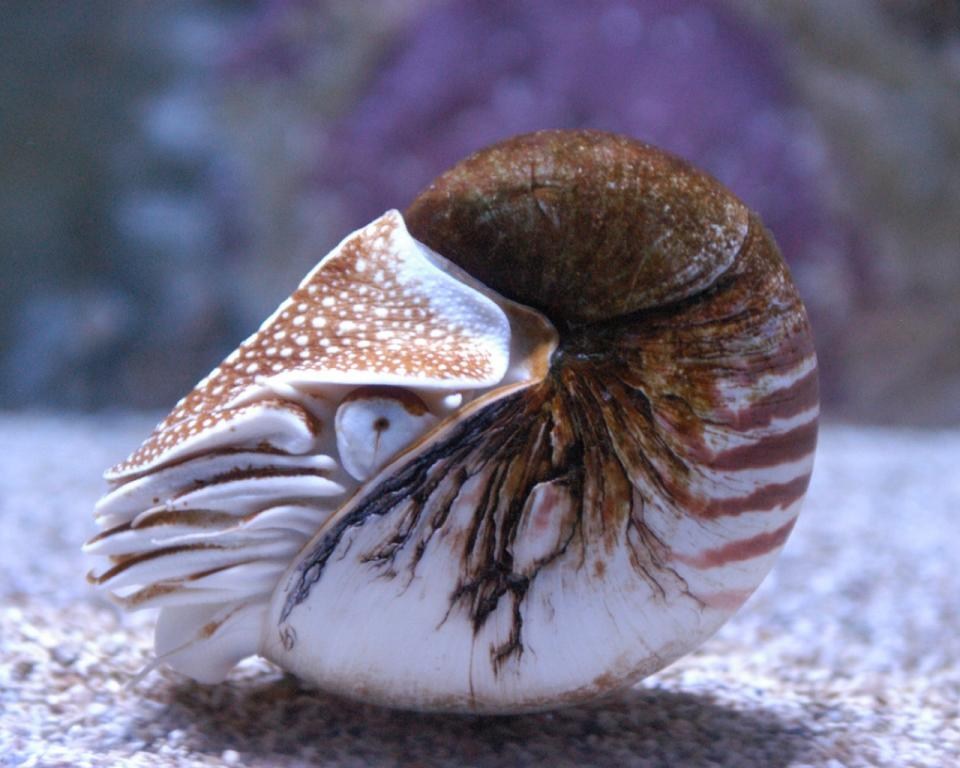Now I moved to mac and it seems that there is no nautilus support in it. Is there any equivalent command that I can use. My scenario is like this, I open a Terminal, go to the folder I want let's say /Users/user1/myapps and I do want to use a command that by typing it in Terminal, it bring me the graphical folder / files view where I am. The fun nautilus shell print is straight from the M.MAC archives Henley-style pajama top is approx. 28' long; Capri-style bottoms have an approx. 22-1/2' inseam Smooth midweight jersey. The nautilus (from the Latin form of the original Ancient Greek: ναυτίλος, 'sailor') is a pelagic marine mollusc of the cephalopod family Nautilidae, the sole extant family of the superfamily Nautilaceae and of its smaller but near equal suborder, Nautilina. It comprises six living species in two genera, the type of which is the genus Nautilus. Nautilus Minerals Inc and Marine Assets Corporation (MAC) have fallen victims to a cyber attack by an unknown third party, who took USD 10 million worth vessel deposit from what was believed to be MAC’s account, Nautilus said. The amount was intended to serve as part of a charterer’s guarantee worth USD 18 million for a newbuild vessel.
It’s Tech Preview time, and this year we’re doing things a bit differently. Let’s dive in!
New Decade, New Approach to “Beta”
Here on the Fusion team, we want to get features in the hands of customers faster than ever before, and we want to iterate and refine things with the guidance of our users, and to do so transparently, out in the open, as much as possible.
In that vein, for the Fusion Pro Tech Preview 2020 we’re doing things a bit differently than we have in previous years.
This year, in an ongoing way, we’ll be releasing multiple updates to our Tech Preview branches, similar to how we update things in the main generally available branch. The first release is available now, and we’re calling it ’20H1′.
What this means is that if you have Tech Preview 20H1 (TP20H1 as we lovingly call it…) installed, it will get updates throughout the year as we improve the quality of our release.
We’re also moving our documentation and other things over to GitHub. We’ll be continuing to add more to the org and repos there, maintain and curate it, as well as host code and code examples that we are able to open source.
Having our docs etc on GitHub let users provide feedback and file issues filed against both docs as well as the products themselves. We will continue to post updates and encourage discussion in the community forum, while GitHub becomes more of a place where we can refer to the ‘latest source of truth’, and where folks can file (and even track) more ‘official’ bugs.
We encourage folks to file issues on GitHub, as well as fork and make changes to the repos there if you believe there’s a better way or if we’re missing something.
Same as always, the Tech Preview builds are free for use and do not require a purchased license, but they come with no guarantees of support and things might behave unexpectedly. But hey, that’s where the fun is, right?
Okay, let’s talk about features…
Firstly, we did some cool USB work! We’ve opted into using Apple’s native USB stack, enabling us to remove one of our root-level kernel extensions. Try out your devices and let us know if they have any trouble by filing an issue in this GitHub repo: Fusion GitHub usb-support
In Fusion Tech Preview 20H1, however, our main focus is the initial release of an internal project we’ve been calling ‘Project Nautilus‘. We’ve been working on this for almost 2 years, so I’m extremely pleased to say that it’s finally available to the public to use, for free, as part of TP20H1.
What is Project Nautilus?
Project Nautilus enables Fusion to run OCI compliant containers on the Mac in a different way than folks might be used to. Our initial release can run containers, but as we grow we’re working towards being able to declare full kubernetes clusters on the desktop.
By leveraging innovations we’re making in Project Pacific, and a bevy of incredible open source projects such as runC, containerD, Cri-O, Kubernetes and more, we’re aiming to make containers first-class citizens, in both Fusion and Workstation, right beside virtual machines.
Currently a command-line oriented user-experience, we’ve introduced a new tool for controlling containers and the necessary system services in VMware Fusion and Workstation: vctl.
Containers on the desktop today
Today when you have say, Docker for Mac installed, its services start, it creates a special Linux virtual machine (in one of many ways, including using Fusion), and essentially maps all of the ‘docker’ commands back the kernel running in the linux vm. (remember that docker is just a front-end to containerd, formerly dockerd, which front ends runC, which interfaces into the linux kernel ‘cgroups’ feature for isolating processes [i.e. the ‘container‘ part of the container].)
So that bulky VM sits there running, waiting for your docker commands, and runs all your containers within it.
Each running container becomes a part of the docker private network, and you forward some ports to localhost and expose your service.
In Fusion with Project Nautilus, we’ve taken a different approach.
Nautilus is different
The vision for Nautilus: A single development platform on the desktop that can bring together VMs, Containers and Kubernetes clusters, for building and testing modern applications.
With Nautilus, leveraging what we built for vSphere and Project Pacific, we’ve created a very special, ultra-lightweight virtual machine-like process for isolating the container host kernel from the Host system. We call that process a PodVM or a ‘Native Pod’.
Each Container get’s its own Pod, and each Pod gets its own IP address from a custom VMnet, which can be easily seen when inspecting the container’s details after it launches.
Meaning, we can easily consume running services without have to deal with port forwarding back to localhost.
It also means that while today we deploy the container image in a pod on a custom vmnet, we can conceivably change that to a bridged network… Meaning you could start a container, the pod would would get an IP from the LAN, and you can then immediately share that IP to anyone else on the LAN to consume that service, without port forwarding.

Nautilus For Home
Of course with custom vmnets we can configure port forwarding, and we’ll also be exposing more functionality there as we grow the Nautilus toolkit.
One of our goals is to bring to bear a new model for design much more complex deployments. We see a future where we can define, within a single file, a multi container + VM + kubernetes cluster deployment, allowing users to accelerate their application modernization.
Nautilus Today
Today Nautilus is controlled by ‘vctl’, and that binary is added to your $PATH when Fusion TP 20H1 is installed.
Let’s look at the vctl default output:
You can see we are off to a good start, there’s a lot we can do already. We also have many aliases in place. Most commonly you’ll have ‘ls’ for ‘get’, ‘i’ fo
As a quick example, to run our first container first we need to start the services.
Nautilus Form L251
Once the system is prepared and started, we can pull an image:
Note that we’re providing a full URL to the image hosted on docker hub, but we could easily point that to a private Harbor instance or some other OCI-compliant registry. In these examples I’m referring to the full path as the image name, but you could ‘tag’ it and just refer to the tag for simplicity’s sake.
Now that we have the container in our local inventory:

Cool, there’s my image (you can see it live at https://mikeroysoft.com!).
Let’s start it up!

You can see that the container ‘my-www’ is running, based on the mrs-hugo:dev image in it’s fully-pathed form.
You can see the command being run, and most interestingly you have an IP address.

Opening that up yields whatever was running in the container. In my case it’s nginx serving up some static content on port 80. No port mapping necessary.
I won’t go into much further detail in this post, but in the coming days and weeks we will be doing a series of posts and additions to the GitHub repository to explore using all of the capabilities we’ve been able to deliver as part of Nautilus.
Nautilus Tomorrow: Let’s get there together
This is only the first iteration, and we’re making great effort to ensure that we can iterate quickly. This means not only listening better and hearing more from our users, but also tracking issues more transparently, and hold ourselves accountable for delivering fixes and improvements in a timely manner.
We see a not-so-distant future where we can define complex multi-vm+container+kubernetes cluster setups locally on the desktop using a standard markup, and to be able to share that quickly and easily with others even if they’re using Windows.
Nautilus Macromphalus For Sale
So there you have it… time to go get started!
